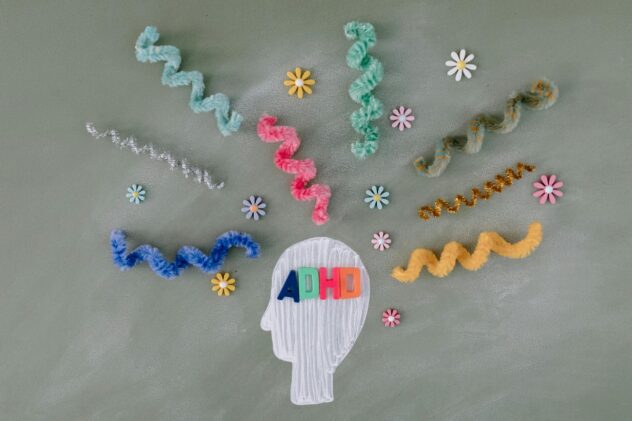Trauma vs Neurodivergence Traits: Avoiding Misdiagnosis
Ever tried putting together a puzzle only to realise half the pieces belong to a different set? One’s a picture of a sunset, the other’s a zebra, and you’re stuck wondering if you’ll ever make sense of it. That’s what it’s like trying to untangle trauma vs neurodivergence traits. Both are intricate, wildly misunderstood, and—here’s the kicker—they can look suspiciously alike. The result? Misdiagnosis. Cue unnecessary therapies, baffled doctors, and individuals stuck wondering why their “solutions” feel more like Sudoku without a pen. So, grab your puzzle mat (or just a coffee) and let’s dive into the fascinating overlaps between trauma and neurodivergence, the risks of getting it wrong, and how we can finally get those pieces in the right box.
What is Trauma (AKA: Why Our Brains Sometimes Feel Like an Alarm That Won’t Turn Off)?
Trauma happens when life hits us with a sledgehammer—abuse, neglect, car accidents, or even being told to “calm down” when we’re clearly not calm. These experiences leave marks on the brain, often rewiring it to react faster, feel deeper, and trust… well, nobody. Trauma’s greatest hits include hypervigilance (like living with a permanent “Danger! Keep Out!” sign in your brain), emotional dysregulation (picture a volcano—only instead of lava, it’s all your feelings at once), dissociation (zoning out like you’re buffering in real life), and trust issues (think “I’ll trust you… never”). The thing is, trauma doesn’t just sit quietly in the corner—it shakes up how people interact with the world. And, just to make things extra complicated, some trauma behaviours can look a lot like neurodivergence.
What is Neurodivergence?
Neurodivergence is all about brains running on a different operating system. ADHD, autism, dyslexia—they each come with their quirks and brilliance, even if the neurotypical world doesn’t always get it.
Unlock peak brain performance with science-backed biohacks. Join free now & get your guide for just £4.99 (45% off)!

Traits of Neurodivergence
Sensory processing differences: The lights are too bright, the tag on your shirt feels like sandpaper, and that faint buzzing sound? Unbearable.
Attention quirks: Some days, hyperfocus turns you into a productivity machine. Other days, you forget why you walked into a room.
Communication styles: Neurodivergent folks might use fewer words or 5,000 of them at once. It’s a spectrum, not a script.
Here’s where it gets tricky—traits of neurodivergence and trauma overlap in ways that would make even Sherlock Holmes double-check his notes.
Spotting the Overlaps Between Trauma and Neurodivergence
Emotional Regulation Challenges
Whether it’s trauma triggers or sensory overload, both groups experience emotions like they’re set to “max volume.” A trauma survivor might explode when their guard is down, while an autistic person might have a meltdown when life feels too loud. Different causes, same fireworks.
Hypervigilance 2.0
Trauma survivors are always ready for the worst—imagine living like your smoke detector’s battery is dying, forever beeping. Meanwhile, neurodivergent folks (especially those with autism or ADHD) often have heightened awareness too, though it’s more about noticing everything than fearing it.
Social Awkwardness Olympics
Struggling with trust, misinterpreting social cues, or needing time alone? Trauma and neurodivergence both bring unique hurdles to the social arena, often leading to misunderstood interactions.
Sensory Sensitivity
Neurodivergent individuals might find scratchy fabrics unbearable, but trauma survivors can also develop sensory sensitivities—like turning up the world’s intensity settings.
Executive Dysfunction Shenanigans
Trauma survivors may struggle to plan or focus because their brains are busy shouting, “Danger!” Meanwhile, ADHDers are no strangers to missed deadlines, lost keys, or forgetting that important email.
Why Misdiagnosis Matters
When trauma and neurodivergence are mixed up, it can create more problems than it solves.
Missed Diagnosis
Neurodivergent traits might get written off as “just trauma,” or vice versa.
Unhelpful Interventions
Trauma therapies won’t fix ADHD, and strategies for autism won’t undo a traumatic past.
Blame Games
Misdiagnosed individuals often feel frustrated and confused, wondering why they “just can’t get it right.” Spoiler alert: it’s not them—it’s the diagnosis.
Trauma vs Neurodivergence: How to Get the Diagnosis Right
Take a 360° Look
Diagnosing trauma or neurodivergence isn’t like flipping a coin—it’s more like piecing together a crime scene. You need a multidisciplinary team of Sherlocks: the psychologist analysing behavioural patterns, the neurologist examining brain function, and the developmental expert asking, “When did this all start?” Every clue matters, so don’t settle for a quick 10-minute “guess-the-diagnosis” game. It’s about uncovering the full picture, not just squinting at one corner and hoping for the best.
Trauma-Informed Care
Here’s the thing about trauma: it’s sneaky. It can mimic behaviours associated with neurodivergence, which is why professionals need to start there. But stopping there? Big mistake. That’s like seeing smoke and saying, “Ah, it’s definitely a barbecue,” when it could just as easily be a house fire. Trauma-informed care means addressing those past experiences but staying curious—there might be ADHD, autism, or other neurodivergent traits hanging out in the background, waiting to be noticed.
Context is Key
Context is everything. Without it, you’re like a tourist looking at an abstract painting and saying, “Well, it’s… colourful?” Take social withdrawal, for instance. In one culture, it might signal trauma, in another, it’s just an introvert living their best life. Similarly, a chaotic home environment can make a child’s ADHD look like a supercharged Energizer Bunny, while a calm environment might help them manage their symptoms. Diagnosing without context is like reading a book with random pages torn out—you’ll spend the rest of the story wildly guessing and getting it wrong.
Listen to Lived Experiences
Want to get to the heart of the matter? Listen to the person who’s living it. Or the people who know them best. Parents might describe their child’s aversion to scratchy socks, partners might mention meltdowns after a loud dinner party, and the individual themselves might say, “Why does everyone else seem to have their act together while I’m drowning in sticky notes?” These aren’t just anecdotes; they’re golden clues that connect the dots. But fair warning: it’s not about ticking boxes. If you’re trying to shove someone into a diagnostic label like it’s a too-tight pair of jeans, you’re doing it wrong. Trauma vs Neurodivergence is complicated.
Beyond the Diagnosis
Once the diagnosis is sorted (and hopefully it’s the right one), it’s time for the real work. A label isn’t a magic wand—it’s more like a map. Helpful, yes, but you still need a compass, snacks, and maybe a guide. Tailored support is the goal, whether that means creating sensory-friendly workspaces, finding therapies that address both trauma and neurodivergence, or developing life hacks for executive dysfunction. (Pro tip: start with sticky notes and a calendar app—it’s a game-changer.)
Final Thoughts: It’s Not About the Label, It’s About the Person
Trauma and neurodivergence might share some traits, but they’re not interchangeable. Misdiagnosis isn’t just a headache—it’s a barrier to the support people need to thrive. By approaching diagnosis with care, curiosity, and compassion, we can finally solve the puzzle without forcing pieces where they don’t belong. Because at the end of the day, it’s not about whether someone fits into a specific box—it’s about understanding who they are, quirks and all.
Ready to Dive Deeper?
Join our Herbal Biohacker Community, where we explore neurodivergence, share success stories, and discuss natural ways to support brain health. From personalised routines to the latest insights, you’ll find everything you need to start thriving.
Affiliate Suggestions
We know managing sensory overload or emotional dysregulation can feel overwhelming. Looking to try a proven method for calming your nervous system? Explore this recommended ice bath setup (we may earn a small commission for this, which helps keep our site free) for a refreshing way to reduce stress and regulate emotions.
For those interested in natural brain support, check out our favourite supplements for focus and emotional regulation. Backed by science, these options can make a world of difference.







